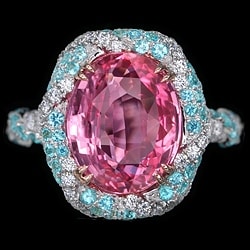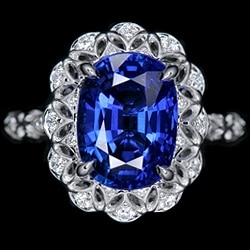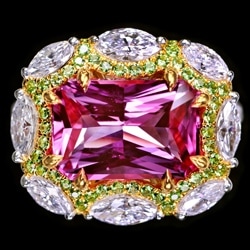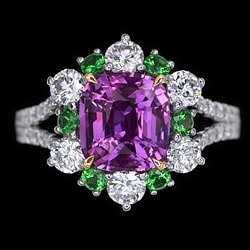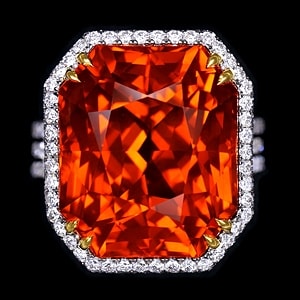
Types of Sapphire
Captivating in their beauty and their significance, sapphires are recognized as holy stones symbolic of power and strength, and well as kindness and wisdom. Appreciated by cultures and religions throughout history and all over the world, it is no wonder that their popularity continues to grow.
When you imagine a beautiful sapphire, the color blue is often the first thing that comes to mind. However, you may not know that they actually come in all colors of the rainbow, except red because that would be classified as a ruby. In the coming blog we’re going to elaborate on the chemical make-up, rarity, and price points of the various sapphires.
Blue sapphires
Blue sapphires are undoubtedly the most popular of all sapphires. When purchasing one, there are three variables to consider: color, country of origin, and treatment.
The striking blue color that has led to our association of the gemstone with high royalty can be attributed to the presence of titanium. The two most popular are ‘Cornflower’ blue sapphires and ‘Royal’ blue sapphires, which are strong and velvety.
Kashmir and Burmese sapphires are definitely favored and command prices that reflect their rarity. As you may expect, the most sought after blue sapphires are those that have the golden trifecta: vivid color, Kashmir origin, AND totally untreated.
Untreated stones are faceted as soon as they are taken from the ground, making them as natural as can be. It is important to note, though, that the term ‘natural sapphire’ does not refer to whether or not the stone was treated but rather, if came from the natural earth or a synthetic lab.
Prior to the early 1900’s and De Beer’s ‘A Diamond is Forever’ campaign that promoted diamonds as the go-to for engagement rings, sapphires were the norm. However, due to their striking appearance and remarkable durability, the blue beauties are making quite the comeback. Some attribute this Prince William’s proposing to Kate Middleton with his mother, Princess Diana’s, Ceylon blue sapphire engagement ring. It is no wonder that the historical and symbolic stone represents the union between two in love.
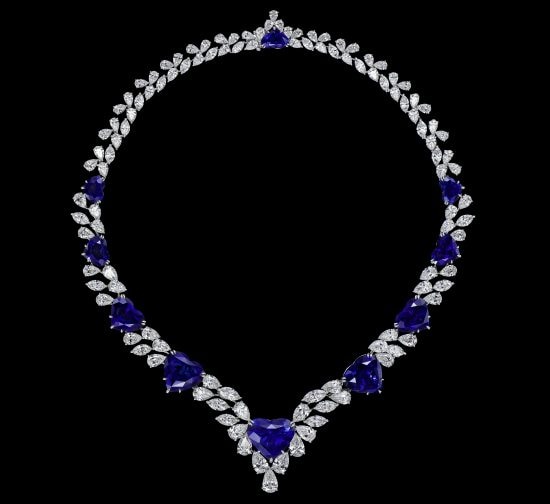
Pink Sapphires
The popularity of pink sapphires for engagement rings has also been on the rise with females being drawn to its feminine color. In the past people were more attracted to vivid pinks but, nowadays, we see many gravitating towards the lighter shades because of their airy and delicate feel that pairs beautifully with the ever popular rose gold. Deeper and darker tones of pink are definitely harder to come by, which in turn make them more valuable.
Originally, pink sapphires were found in small amounts in Sri Lanka and Myanmar (previously Burma) but in the late 1990s a deposit was found in Madagascar, which has made these stones much more available.
Pink sapphires attain their color through the addition of chromium and small presence of other elements. Interestingly, stones with considerably high concentrations of chromium are actually referred to as rubies. The addition of some titanium will lead to a more purplish pink, while iron will add a blue tint.
Pink sapphires also undergo heat treatment but often under much lower temperatures and shorter time frames than blue ones. Getting your hands on an untreated pink sapphire is extremely rare and will require a certificate to prove the lack of treatment.
Orange Sapphire
Orange sapphires are bright and joyful stones that exude happiness and vitality within its owners. This grounding and comforting stone owes its warm orange tone to the presence of chromium and iron in its formation. Orange sapphires range from pale to vivid reddish-orange with, occasionally, a brown tone. As with other colored sapphires, their recognition and popularity is growing.
Padparadscha Sapphire
Although uncommonly seen among the general public, padparadschas have become a favorite of gemologists and gem connoisseurs.
Padparadscha is a Sanskrit word used to describe the color of a tropical lotus flower. The stone is reminiscent of a romantic sunset that possesses a multitude of warm and soothing colors like orange, which makes the stone so special. This orange hue is due to the presence of, both, iron and chromium.
Padparadschas are one of the rarest gems in the entire world. Most hail from Sri Lanka, although, some have been found to have originated in Madagascar. Untreated Sri Lankan Padparadshas are the most highly regarded. However, if you’re getting a treated padparadsha, one from Madagascar may be your best bet with greatest value.
Due to their rarity, padparadschas command higher price points that may reach several thousand dollars per carat. It is extremely uncommon to find a padparadscha that is over 2 carats (but if you want to see one, just visit us at our Hong Kong showroom). With the engagement ring of Princess Eugine being a Padparadscha encircled by diamonds, forming a delicate flower, the stone has increased in popularity.
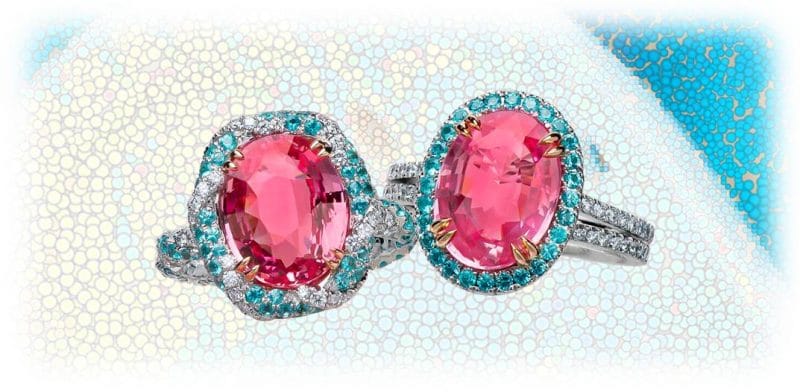
Other Sapphires
Other than the four aforementioned sapphires, you can also find a multitude of other colors and also different types of sapphires, such as the star sapphire. Star sapphires achieve their unique look through ‘asterism’, a truly special phenomenon that displays a six edged star, which floats on the surface of a cabochon sapphire.
Dehres Collection
We proudly hold a wide collection of precious sapphires including, both, heated and unheated from countries such as Sri Lanka, Madagascar, and Tanzania. We invite you to make an appointment and view our collection of loose and mounted sapphires.



